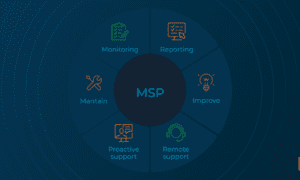As a founder looking into the healthcare sector, you’ve probably internalized the harsh truths: systems are burdened, costs are spiraling out of control, and physicians are drowning in administrative tasks, leading to frightening levels of burnout. The sheer volume of medical data—clinical notes, imaging, genomic sequences—is now so massive that no human, however expert, can synthesize it all effectively.
This bottleneck is precisely where Artificial Intelligence steps in.
AI in healthcare is not some far-off futuristic concept; it is actively, right now, reshaping patient care by moving the industry from reactive, generalized treatment to proactive, personalized intervention. For the startup founder, this represents not only a massive investment opportunity but a moral imperative. Success in this field requires moving past buzzwords and focusing on where AI delivers verifiable improvements in patient outcomes, operational efficiency, and, crucially, compliance.
This comprehensive guide breaks down the core applications, technical hurdles, and ethical frameworks necessary to leverage AI for demonstrably better patient care. I think that understanding these mechanics is the only way to build a sustainable and ethical AI in the healthcare business.
AI’s Core Impact on Clinical Decision Making
The most potent applications of AI in healthcare today are found in augmenting the diagnostic and therapeutic capabilities of medical professionals. This isn’t about replacing doctors; it’s about giving them superpowers powered by data.
1. Predictive Diagnostics and Early Detection
One of the largest, most validated domains for AI lies in pattern recognition using medical imaging. AI models, particularly deep learning networks, excel at spotting anomalies invisible or easily missed by the human eye, particularly under pressure.
Radiology: AI algorithms are now routinely used as a “second read” for mammograms, CT scans, and X-rays. For instance, models trained on millions of images can detect subtle calcifications indicative of early-stage breast cancer or tiny pulmonary nodules much earlier than human readers, sometimes improving detection rates by up to 20%. This early detection is the single greatest determinant of successful treatment in oncology.
Pathology: AI uses image analysis to grade tumor biopsies, identifying cellular structures and spatial arrangements that predict malignancy, recurrence risk, and even therapeutic response. This provides pathologists with consistency and speed, ensuring higher throughput and fewer diagnostic errors.
2. Personalized Treatment and Drug Discovery
In the past, treatment protocols were based on population averages. AI in healthcare allows physicians to tailor medicine down to the individual’s unique molecular profile.
Genomic Analysis: AI tools ingest vast amounts of genomic sequencing data (e.g., mutations, biomarkers) and cross-reference them with databases of clinical trials and known drug efficacy. This allows the system to recommend the single most effective drug for a patient’s specific cancer subtype, bypassing ineffective therapies that waste time and money.
Drug Repurposing: Finding and developing a new drug takes billions of dollars and over a decade. AI dramatically accelerates this by analyzing existing drug databases to find compounds already approved for one condition that show promise for treating another (drug repurposing). This cuts the development cycle from years to months, speeding up access to life-saving treatments.
3. Clinical Decision Support Systems (CDSS)
CDSS are tools integrated into the Electronic Health Record (EHR) that provide prompts, reminders, and patient-specific recommendations at the point of care. These are essential for mitigating human fatigue and cognitive overload.
Sepsis Alerts: Perhaps one of the best use cases involves monitoring vital signs, lab results, and medication orders to predict the onset of dangerous conditions, like sepsis, often 4-6 hours before a human doctor or nurse would typically recognize the severity. Timely intervention here directly saves lives.
Preventing Drug Interactions: With polypharmacy being a common issue in complex healthcare cases, AI instantly flags potential dangerous interactions between multiple medications prescribed by different specialists, significantly reducing adverse drug events (ADEs).
III. Enhancing the Patient Experience and Operational Flow
AI doesn’t just improve clinical outcomes; it revolutionizes the relationship between the patient and the healthcare system, addressing common friction points like waiting times and access.
4. Intelligent Triage and Virtual Assistants
The first point of contact for a patient is often the highest friction point. AI makes access smarter and faster.
Symptom Checkers and Triage Bots: AI-powered chatbots can accurately take a patient’s history, assess symptoms, and apply sophisticated triage logic to determine the appropriate next step—whether that’s self-care advice, a virtual visit, or an immediate trip to the emergency room. This ensures patients receive the right level of care promptly and reduces unnecessary strain on emergency services.
Administrative Automation: AI handles the mundane tasks that plague clinic staff: appointment scheduling, insurance eligibility verification, and billing inquiries. This frees up human staff to focus on empathetic, complex patient communication, improving overall service quality.
5. Remote Monitoring and Chronic Care Management
Chronic diseases (like diabetes, hypertension, and heart disease) account for a staggering portion of healthcare costs. AI-driven remote monitoring is the key to proactive management.
Wearables and Data Analysis: AI systems ingest real-time data from wearables (activity trackers, glucose monitors, blood pressure cuffs) to establish a personalized baseline for the patient. If the patient’s data deviates significantly from this baseline—perhaps a sudden, sustained spike in blood pressure—the AI immediately alerts the clinical team.
Personalized Compliance Coaching: For patients struggling with adherence, AI systems deliver tailored, automated nudges and educational content (via text or app notification) based on their specific challenges, improving long-term outcomes for complex, expensive conditions.
6. The Founder’s Blueprint: Implementation, Ethics, and ROI
For a startup founder, the promise of AI in healthcare must be balanced with the challenging realities of compliance, data access, and clinical adoption. This is where most generic articles fail; they don’t discuss the how.
Data Governance and the “Cold Start” Problem
The success of any AI in healthcare applications hinges entirely on high-quality, vast, and ethically sourced data.
The EHR Integration Challenge: Most hospital systems rely on aging Electronic Health Record (EHR) systems that do not “play nicely” with modern AI tools. Founders must anticipate the complexity of integrating their AI module, ensuring seamless data flow back and forth without disrupting clinical workflow. The integration cost can sometimes outweigh the development cost—a harsh but true lesson.
Data Labeling and Annotation: Clinical data is complex. An MRI scan is useless to an AI model until a human expert (the radiologist) spends hours annotating and labeling the specific areas of interest (e.g., “this is a tumor,” “this is calcification”). Founders must budget for and secure high-quality data labeling services to overcome the AI “cold start” problem.
Ethical AI in Healthcare and Bias Mitigation
Because AI models learn from historical data, they inevitably learn historical biases. If a model is trained primarily on data from wealthy, metropolitan hospitals, it may perform poorly (or dangerously) when deployed in rural or lower-income areas with different patient populations and data quality standards.
Regulatory Compliance (HIPAA/GDPR): Data privacy is non-negotiable. Founders must ensure absolute compliance with regional regulations (like HIPAA in the US, GDPR in Europe) from the moment the product is conceived. Data must be anonymized, encrypted, and governed by strict access protocols. A single compliance failure can destroy a startup overnight.
Bias Auditing: Before deploying any model, it must be rigorously audited against various demographic cohorts (age, race, socioeconomic status) to ensure it performs equally well for all patients. I personally think this continuous auditing should be mandatory, as it’s about equitable patient care.
ROI Focus: Shifting from Cost Center to Value Engine
AI Application
Primary Cost Saving
Direct Patient Care Improvement
Diagnostic Imaging Support
Reduced second-read fees; decreased malpractice risk.
Faster time to treatment; higher accuracy in complex cases.
Triage & Scheduling Bots
Reduction in administrative staffing time; reduced no-shows.
Instant access/advice; optimized provider schedules.
Remote Patient Monitoring
Reduced hospital readmissions (the most expensive events).
Continuous management of chronic conditions; early alerts for deterioration.
Drug Interaction CDSS
Fewer adverse drug events (ADE); reduced hospital stays due to error.
Safer prescribing practices; improved patient safety.
The key takeaway for founders is that the ROI in AI in healthcare is realized not just through staff savings, but primarily through preventing expensive negative events—readmissions, misdiagnoses, and drug errors.
Conclusion
The convergence of clinical necessity and technological capability has made AI in healthcare the single most disruptive force in medicine. For the founder, the path to better patient care requires a deep, ethical commitment to quality data, transparent deployment, and unwavering focus on clinical relevance. Moving forward, AI is not a tool to replace the expertise of the human doctor, but a sophisticated, data-driven partner that enhances their cognitive reach, allowing for earlier detection, more personalized treatment, and ultimately, a safer, more efficient, and more human-centered healthcare experience.
Frequently Asked Questions (FAQ)
What is the biggest hurdle for a startup founder deploying AI in healthcare?
The biggest hurdles are not technical development, but rather regulatory compliance (specifically HIPAA and GDPR) and data access. Securing access to large, clean, labeled datasets and seamlessly integrating with existing, often proprietary, EHR systems requires significant investment and specialized expertise.
How do doctors feel about using AI tools? Are they resistant?
Initially, resistance was common. However, as AI tools have moved from abstract concepts to validated tools that demonstrably reduce administrative burden and improve diagnostic confidence (e.g., flagging a missed tumor), clinical adoption has increased. The key is ensuring the AI acts as a support system, not an authoritative replacement.
Is AI in healthcare only useful for large hospital systems?
Absolutely not. AI is often more transformative for smaller clinics and remote providers by providing access to specialist-level decision support (like advanced radiology analysis) that they previously couldn’t afford or access, democratizing high-quality healthcare.

































